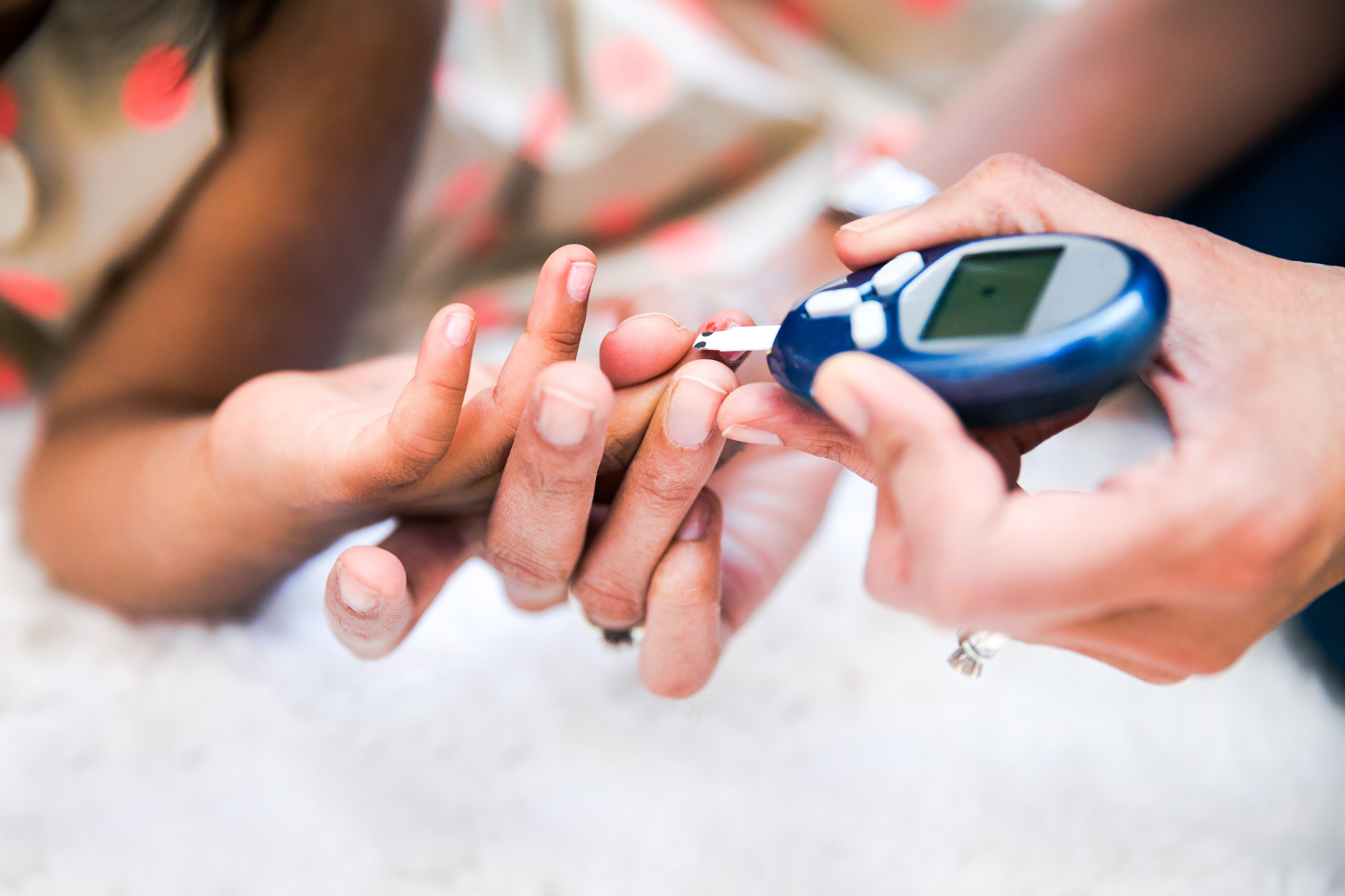When children are sick, they still need their long-acting insulin at their usual times. In fact, they may need extra injections of rapid-acting insulin as often as every four hours if they have high blood glucose (sugar) levels or if ketones show up in their urine.
Because toddlers urinate at random times and not on command, it can be challenging for parents to regularly check urinary ketones. Your diabetes team may provide you with a blood ketone metre to check ketone levels in your toddler’s blood instead of the urine.
Adjusting insulin doses according to blood sugar and ketone tests
To decide how much insulin to give, check blood sugar and urinary ketone levels every four hours.
Consult the information below each time. The following illness scenarios offer courses of action depending on results of the blood sugar, urinary ketone, and blood ketone tests.
Scenario one
Blood sugar: Less than 6 mmol/L
Urinary ketones: Negative or positive (any amount)
Blood ketones: 0 to 3 mmol/L
Action:
- If it is time to give insulin, reduce the dose of the long/intermediate-acting insulin and/or rapid-acting insulin by 10% to 20%.
- Encourage your child to drink fluids that contain carbohydrates.
- Speak to your doctor if further reductions are required, if your child refuses to drink, or if your child vomits.
- If your child cannot eat or drink to treat a low blood sugar (hypoglycemia) this may be a time to give mini-dose glucagon.
Scenario two
Blood sugar: 6 to 14 mmol/LUrinary ketones: Negative or positive (any amount)
Blood ketones: 0 to 3 mmol/L
Action:
- Give the usual insulin (long-acting and/or rapid) at the usual time. Do NOT give extra.
- Recheck blood sugar and urine for ketones in 4 hours.
Scenario three
Blood sugar: More than 14mmol/L
Urinary ketones: Negative or small (if your ketone strips follow the plus [+] scale, then [-] or [1+] fall under this category)
Blood ketones: 0 to 0.6 mmol/L
Action:
- Give extra rapid-acting insulin now, up to 10% of the total daily dose. Give this in addition to the usual insulin (long-acting and/or rapid) at the usual time.
- Recheck blood sugar and urine for ketones in 4 hours.
Scenario four
Blood sugar: More than 14 mmol/L
Urinary ketones: Moderate or large (if your ketone strips follow the plus [+] scale, then [2+] or [3+] fall under this category)
Blood ketones: 0.7 to 3 mmol/L
Action: :
- Give extra rapid-acting insulin NOW, at least 10% to 20% of the total daily dose. Give this in addition to the usual insulin (long-acting and/or rapid) at the usual time.
- Recheck blood sugar and urine for ketones in 4 hours.
To figure out how much more rapid-acting insulin to give, add up the total daily dose (TDD) of insulin.
How to figure out the total daily dose (TDD)
To determine the total daily dose (TDD), you must add all amounts of insulin from the past 24 hours including both long/intermediate and rapid-acting insulin.
Here is an example to help you figure out how much rapid-acting insulin to give based on the TDD.
Consider a child taking the following:
- 20 units of intermediate-acting and 4 units of rapid-acting insulin before breakfast
- 4 units of rapid-acting insulin before supper
- 7 units of intermediate-acting insulin before bed.
This child has a total of 20+4+4+7=35 units of insulin a day. Ten percent of 35 units is 3.5 units because (35 x 10)/100=3.5. Twenty percent of 35 units is 7 units because (35 x 20)/100=7).
This child should receive 4 to 7 units. Small children tend to be sensitive, so for them, you should start with dosages at the lower end of the range.
